
www.Optumas.com Schramm Health Partners, LLC
7400 East McDonald Dr, Suite 101
Scottsdale AZ 85250
480.588.2499 main
480.315.1795 fax
July 13, 2018
Mr. Michael Randol
Iowa Medicaid Director
Iowa Medicaid Enterprise
100 Army Post Rd.
Des Moines, IA 50315
Subject: SFY19 IA Health Link Managed Care Rate Development
Dear Mr. Randol:
Thank you for the opportunity to assist the Iowa Medicaid Enterprise (IME) with the development of the
SFY19 IA Health Link capitation rates. The following report summarizes the methodology used for the
development of the capitation rates, effective July 1, 2018 – June 30, 2019. We have also provided our
actuarial certification for these capitation rates, compliant with CMS guidelines and requirements.
Please send me an e-mail at zachary.aters@optumas.com or call me at 480.588.2495, or e-mail Barry at
barry.jordan@optumas.com or call at 480.588.2492 if you have any questions.
Sincerely,
Zachary Aters, ASA, MAAA Barry Jordan, ASA, MAAA
Senior Actuary, Optumas Consulting Actuary, Optumas
CC: Elizabeth Matney, Medicaid Managed Care Bureau Chief
Steve Schramm, Optumas

Iowa Medicaid Enterprise
IA Health Link Rate Development Actuarial
Certification
July 1, 2018 – June 30, 2019 Capitation Rates
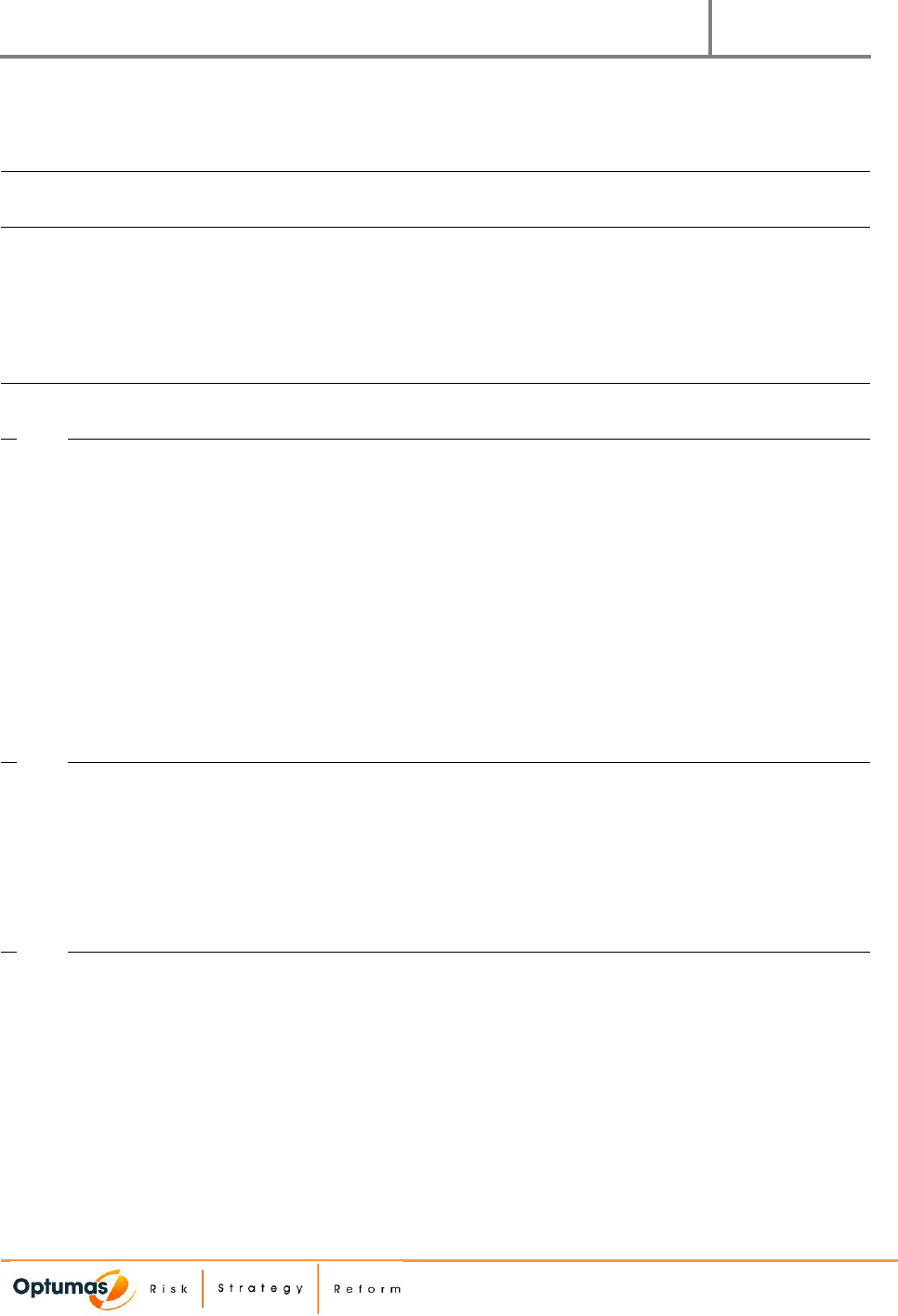
Table of Contents
Optumas
i | P a g e
Table of Contents
TABLE OF CONTENTS I
EXECUTIVE SUMMARY 4
BACKGROUND 4
SUMMARY OF CAPITATION RATES 5
FISCAL IMPACT ESTIMATE 5
RATE DEVELOPMENT SUMMARY 5
SECTION I. MEDICAID MANAGED CARE RATES 6
1. GENERAL INFORMATION 7
A. RATE DEVELOPMENT STANDARDS 7
I. CONTRACT PERIOD 7
II. REQUIRED COMPONENTS 7
III. DIFFERENCES AMONG CAPITATION RATES 10
IV. RATE CELL CROSS-SUBSIDIZATION 10
V. PROGRAM CHANGE DATES 10
VI. GENERALLY ACCEPTED ACTUARIAL PRACTICES 10
VII. RATE CERTIFICATION PERIODS 10
VIII. AMENDMENTS 10
B. APPROPRIATE DOCUMENTATION 11
I. DOCUMENTATION OF DATA, ASSUMPTIONS, AND METHODOLOGY 11
II. INDEX 11
III. FMAP 11
IV. RATE CHANGE COMPARISON 11
2. DATA 13
A. RATE DEVELOPMENT STANDARDS 13
I. BASE DATA 13
B. APPROPRIATE DOCUMENTATION 13
I. BASE DATA 13
II. RATE DEVELOPMENT DATA 14
III. ADJUSTMENTS 15
3. PROJECTED BENEFIT COSTS AND TRENDS 21
A. RATE DEVELOPMENT STANDARDS 21
I. SERVICES ALLOWED 21
II. VARIATION OF ASSUMPTIONS 21
III. TREND ASSUMPTIONS 21
IV. IN-LIEU-OF SERVICES 21
V. IMD BENEFITS 21
VI. IMD AS IN-LIEU-OF SERVICE 21
B. APPROPRIATE DOCUMENTATION 21
I. FINAL PROJECTED BENEFIT COSTS 21
II. DEVELOPMENT OF PROJECTED COSTS 22
III. PROJECTED BENEFIT COST TRENDS 23
IV. MENTAL HEALTH PARITY AND ADDICTION EQUITY ACT 25
V. IN-LIEU-OF SERVICES 25
VI. RETROSPECTIVE ELIGIBILITY 25
VII. CHANGES IN COVERED BENEFITS 26
VIII. IMPACT OF CHANGES 26

Table of Contents
Optumas
ii | P a g e
4. SPECIAL CONTRACT PROVISIONS RELATED TO PAYMENT 27
A. INCENTIVE ARRANGEMENTS 27
B. WITHHOLD ARRANGEMENTS 27
I. RATE DEVELOPMENT STANDARDS 27
II. APPROPRIATE DOCUMENTATION 27
C. RISK-SHARING MECHANISMS 28
I. RATE DEVELOPMENT STANDARDS 28
II. APPROPRIATE DOCUMENTATION 28
D. DELIVERY SYSTEM AND PROVIDER PAYMENT INITIATIVES 28
E. PASS-THROUGH PAYMENTS 28
I. RATE DEVELOPMENT STANDARDS 28
II. APPROPRIATE DOCUMENTATION 29
5. PROJECTED NON-BENEFIT COSTS 31
A. RATE DEVELOPMENT STANDARDS 31
I. REQUIRED COMPONENTS 31
II. PMPM AND PERCENTAGE OF CAPITATION RATES 31
III. VARIATIONS 31
IV. HEALTH INSURANCE PROVIDERS FEE 31
B. APPROPRIATE DOCUMENTATION 31
I. DEVELOPMENT 31
II. COST CATEGORIES 32
III. HEALTH INSURANCE PROVIDERS FEE 32
6. RISK ADJUSTMENT AND ACUITY ADJUSTMENTS 33
A. RISK DEVELOPMENT STANDARDS 33
I. RISK ADJUSTMENT 33
II. METHODOLOGY 33
III. ACUITY ADJUSTMENT 33
B. APPROPRIATE DOCUMENTATION 33
I. PROSPECTIVE RISK ADJUSTMENT 33
II. RETROSPECTIVE RISK ADJUSTMENT 35
III. CHANGES TO RISK ADJUSTMENT MODEL AND BUDGET NEUTRALITY 35
IV. ACUITY ADJUSTMENT 35
SECTION II. MEDICAID MANAGED CARE RATES WITH LONG-TERM SERVICES AND SUPPORTS 36
1. MANAGED LONG-TERM SERVICES AND SUPPORTS 37
A. REQUIRED CONTENT 37
B. RATE DEVELOPMENT STANDARDS 37
I. RATE BLENDING 37
C. APPROPRIATE DOCUMENTATION 37
I. PAYMENT STRUCTURES 37
II. NON-BENEFIT COSTS 38
III. SOURCES 38
SECTION III. NEW ADULT GROUP CAPITATION RATES 39
1. DATA 40
A. NEW ADULT GROUP DATA 40
B. PREVIOUS RATING PERIODS 40
I. NEW DATA 40
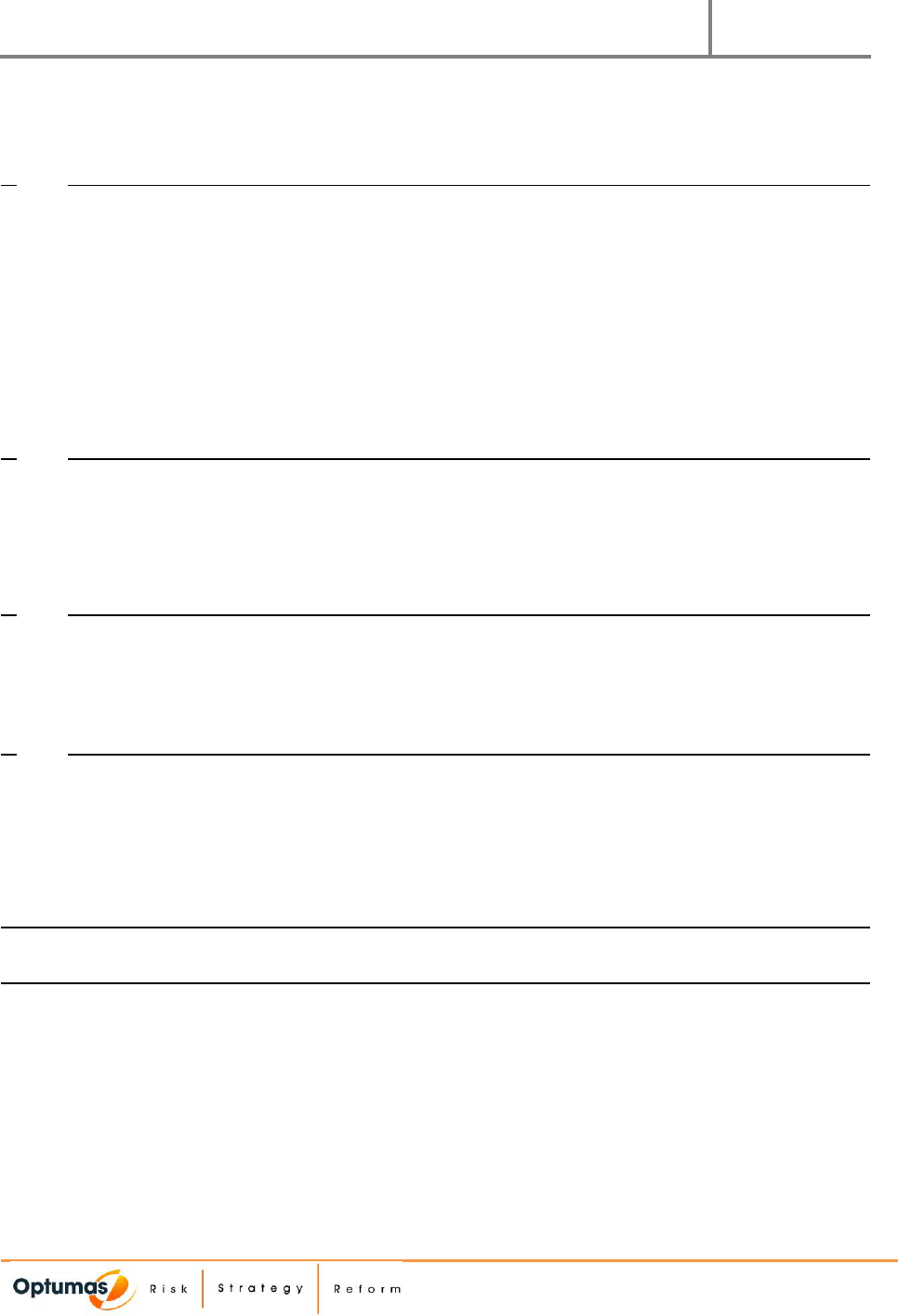
Table of Contents
Optumas
iii | P a g e
II. MONITOR COSTS 40
III. ACTUAL EXPERIENCE COMPARED WITH EXPECTATIONS 40
IV. ADJUSTMENT FOR DIFFERENCES 40
2. PROJECTED BENEFIT COSTS 41
A. NEW ADULT GROUP PROJECTION ISSUES 41
I. NEW ADULT GROUPS COVERED IN PREVIOUS RATING PERIODS 41
B. KEY ASSUMPTIONS 41
I. ACUITY ADJUSTMENTS 41
II. PENT-UP DEMAND 41
III. ADVERSE SELECTION 41
IV. DEMOGRAPHICS 41
V. REIMBURSEMENT AND NETWORKS 41
VI. OTHER ADJUSTMENTS 42
C. BENEFIT PLAN CHANGES 42
D. OTHER MATERIAL CHANGES 42
3. PROJECTED NON-BENEFIT COSTS 43
A. REQUIRED COMPONENTS 43
I. CHANGES IN METHODOLOGY 43
II. CHANGES IN ASSUMPTIONS 43
B. KEY ASSUMPTIONS 43
4. FINAL CERTIFIED RATES 44
A. REQUIRED COMPONENTS 44
I. COMPARISON TO PREVIOUS RATES 44
II. OTHER MATERIAL CHANGES 44
5. RISK MITIGATION STRATEGIES 45
A. DESCRIPTION OF STRATEGY 45
B. COMPARISON TO PREVIOUS PERIOD 45
I. CHANGES IN STRATEGY 45
II. RATIONALE FOR CHANGE 45
III. EXPERIENCE AND RESULTS 45
ACTUARIAL CERTIFICATION LETTER 46
APPENDICES 47

Executive Summary
Optumas
4 | P a g e
Executive Summary
Background
The Iowa Department of Human Services developed the IA Health Link program by contracting with
three Managed Care Organizations (MCOs) to begin service on April 1, 2016 as part of the Medicaid
Modernization initiative. Most existing Medicaid members were enrolled on April 1, 2016 and most new
members will also be enrolled in IA Health Link. Some Medicaid members will continue to be served
through Medicaid Fee-For-Service. The objectives of this initiative are to improve quality and access to
care, promote accountability for patient outcomes, and create a more predictable and sustainable
budget.
This document offers an explanation of the methodologies used in the development of the capitation
rates for the program effective SFY19 (July 1, 2018 through June 30, 2019). Iowa Medicaid Enterprise
(IME) had used another vendor to develop capitation rates prior to SFY19 and has contracted with
Optumas to develop actuarially sound capitation rates for the IA Health Link program effective SFY19.
Through a collaborative approach, IME, the participating MCOs, and Optumas worked to develop
additional cost-saving interventions that could be implemented throughout SFY19. These interventions
are expected to take effect on different dates throughout the SFY19 contract period. Optumas has
developed the rates for IME to be operationalized in three “tiers” throughout the year. These tiers take
into account the interventions that are expected to be in place during each respective time period and
are grouped as follows:
• Tier 1: July 1, 2018 – September 30, 2018
• Tier 2: October 1, 2018 – December 31, 2018
• Tier 3: January 1, 2019 – June 30, 2019
For purposes of this rate certification, the blended annual rates (25% Tier 1, 25% Tier 2, and 50% Tier 3)
and figures will be shown, unless otherwise described. If the interventions do not go into effect on the
dates currently expected an update to this rate certification may be required, and in this scenario will be
submitted to account for necessary changes to the rates.
AmeriHealth Caritas Iowa Inc. withdrew from IA Health Link effective November 30, 2017. The majority
of members previously enrolled with AmeriHealth were transitioned to UnitedHealthcare Plan of the
River Valley, Inc. with coverage beginning December 1, 2017; approximately 10,000 members were
temporarily enrolled in Fee-For-Service (FFS) but have since been enrolled in Amerigroup as of March 1,
2018. The rates in this document were developed with the expectation that members enrolled in the IA
Health Link program will be covered by the two MCOs currently operating in SFY19.
As consulting actuaries to IME, Optumas worked with the State to create a rate setting methodology
determined to be most appropriate for the SFY19 IA Health Link capitation rates. Optumas worked to
ensure the methodology used to develop these rates complies with the Centers for Medicare &
Medicaid Services (CMS) guidance for the development of actuarially sound rates. This document is
structured consistent with the CMS “2018-2019 Medicaid Managed Care Rate Development Guide”. The
final rates were developed according to actuarially sound principles and reasonably reflect the
experience projected for the SFY19 IA Health Link program.

Executive Summary
Optumas
5 | P a g e
Summary of Capitation Rates
In developing the SFY19 capitation rates, Optumas developed a methodology that adheres to guidance
provided by CMS in accordance with 42 CFR 438.4, the CMS standards for developing actuarially sound
capitation rates for Medicaid managed care programs. CMS defines actuarially sound rates as meeting
the following criteria:
1. They have been developed in accordance with generally accepted actuarial principles and
practices,
2. They are appropriate for the populations to be covered and the services to be furnished
under the contract, and
3. They have been certified by an actuary who meets the qualification standards established by
the American Academy of Actuaries and follows practice standards established by the
Actuarial Standards Board.
Optumas specifically considered the following Actuarial Standards of Practice (ASOPs) when developing
the IA Health Link capitation rates:
• ASOP 5 – Incurred Health and Disability Claim
• ASOP 23 – Data Quality
• ASOP 41 – Actuarial Communications
• ASOP 45 – The Use of Health Status Based Risk Adjustment Methodologies
• ASOP 49 – Medicaid Managed Care Capitation Rate Development and Certification
As the consulting actuaries to the State of Iowa for the IA Health Link capitation rates, Optumas worked
in conjunction with the State to develop an appropriate rate setting methodology. The State and
Optumas worked in partnership to ensure that the necessary adjustments were made resulting in
reasonable, appropriate and attainable rates for the expected experience in the contract period.
Optumas applied the above criteria within the development of the methodology for calculating
capitation rates for the SFY19 contract period. The body of this document outlines the 2018-2019 CMS
Consultation guide with compliance to each section discussed in detail. The certified capitation rates for
the IA Health Link managed care program gross of withholds and pass-throughs, effective July 1, 2018 -
June 30, 2019, can be found in Appendix I.A.
Fiscal Impact Estimate
The estimated aggregate fiscal impact of the SFY19 IA Health Link rate changes is an increase of
$344.2M based on SFY17 enrollment, which is the base data time period used for rate development. The
fiscal impact of the SFY19 certified capitation rates, gross withhold, net pass-throughs, compared to the
SFY18 capitation rates, gross withhold, net pass-throughs are shown in Appendix II.A.
Rate Development Summary
A brief description of each component in the rate development process is shown in Appendix II.B.,
including which components are relevant to each rate Tier. Each step of the SFY19 rate development will
be discussed in further detail throughout the remainder of the document.

Section I
Optumas
6 | P a g e
Section I. Medicaid Managed Care Rates

General Information
Optumas
7 | P a g e
1. General Information
A. Rate Development Standards
i. Contract Period
The rates contained in this certification are effective for the 12-month fiscal year period of July 1, 2018
through June 30, 2019 (SFY19) and are broken into three tiers as described in the Executive Summary of
this report.
ii. Required Components
Letter from Certifying Actuary
The rates contained in this document have been certified by Zach Aters, Member of the American
Academy of Actuaries (MAAA), and an Associate of the Society of Actuaries (ASA) and Barry Jordan,
Member of the American Academy of Actuaries (MAAA), and an Associate of the Society of Actuaries
(ASA). Mr. Aters and Mr. Jordan meet the requirements for an actuary in 42 CFR §438.2 and have
certified that the final capitation rates meet the standards in 42 CFR §438.3(c), 438.3(e), 438.4
(excluding paragraph (b)(9)), 438.5, 438.6, and 438.7. A letter from Mr. Aters and Mr. Jordan is included
at the end of this document.
Final Certified Capitation Rates
The final and certified capitation rates for all rate cells are provided in Appendix I.A in accordance with
42 CFR §438.4(b)(4) and 42 CFR §438.3(c)(1)(i).
Description of Program
The Iowa Department of Human Services (State) developed the IA Health Link program by contracting
with three Managed Care Organizations (MCOs) to begin service on April 1, 2016 as part of the Medicaid
Modernization initiative. Most existing Medicaid members were enrolled on April 1, 2016 and most new
members will also be enrolled in IA Health Link. Some Medicaid members will continue to be served
through Medicaid Fee-For-Service. The objectives of this initiative are to improve quality and access to
care, promote accountability for patient outcomes, and create a more predictable and sustainable
budget.
Amerigroup Iowa, Inc. (Amerigroup), AmeriHealth Caritas Iowa Inc. (AmeriHealth) and UnitedHealthcare
Plan of the River Valley, Inc. (United) enrolled members statewide effective April 1, 2016. AmeriHealth
withdrew from IA Health Link effective November 30, 2017. The majority of members previously
enrolled with AmeriHealth were transitioned to United with coverage beginning December 1, 2017;
approximately 10,000 members were temporarily enrolled in FFS but have since been enrolled in
Amerigroup as of March 1, 2018. The rates detailed in this certification letter are effective SFY19 and
have been developed with the expectation that members enrolled in IA Health Link will be covered by
Amerigroup and United.
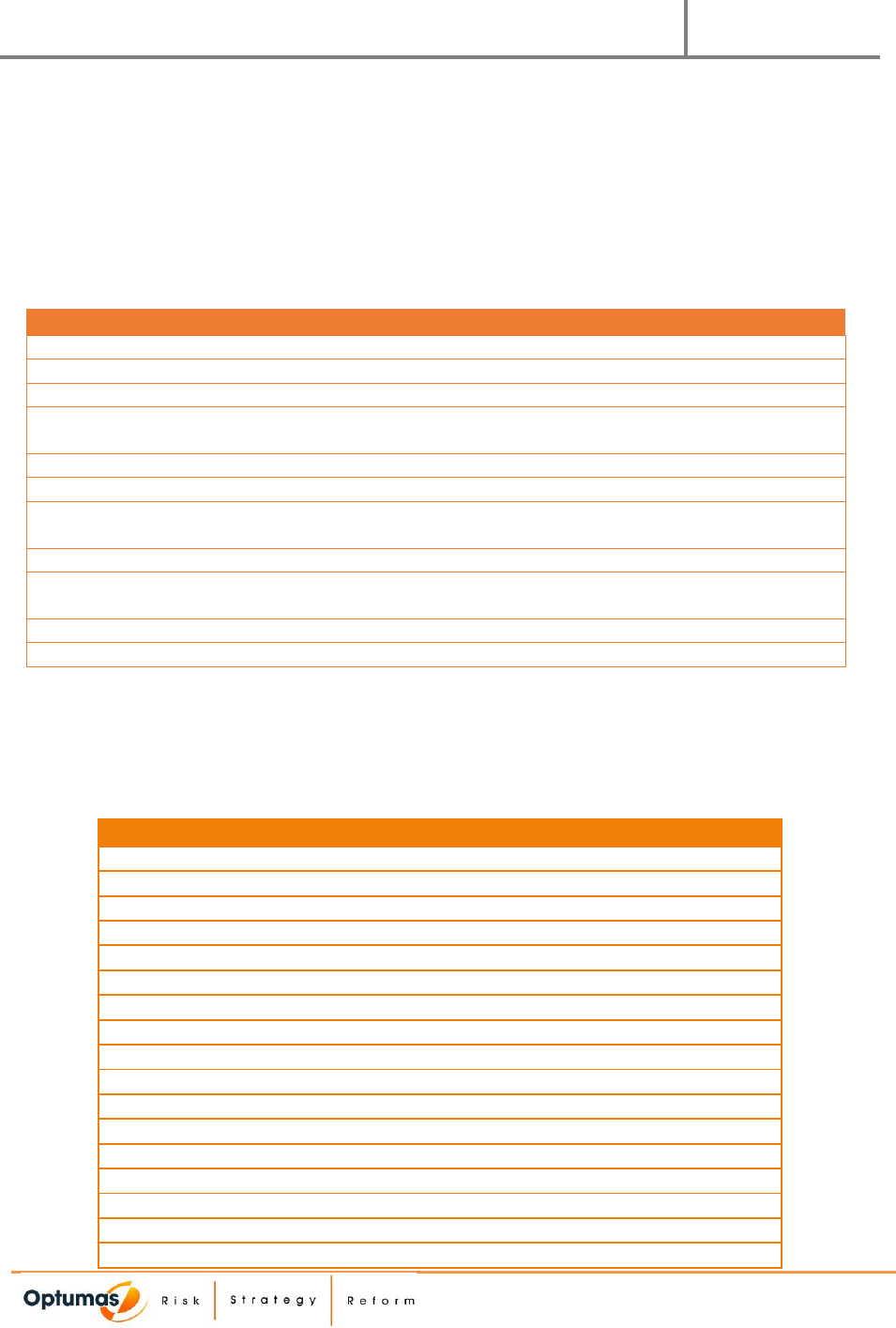
General Information
Optumas
8 | P a g e
MCOs participating in the IA Health Link program are required to provide benefits that include physical
health, long-term supports and services, behavioral health, and pharmacy prescriptions. These MCOs
are not at-risk for certain high-cost drugs which are reimbursed outside of the capitation rates and
reimbursed via invoice by IME. The list of drugs excluded from the capitation rates is included in
Appendix II.C. Dental services and the Program of All-Inclusive Care for the Elderly (PACE) are covered
under separate managed care programs. The base data was summarized into similar service categories
that included those required to be provided by the MCOs, referred to as the following Categories of
Service (COS):
Categories of Service (COS)
Behavioral Health – Inpatient
Laboratory (Lab)/Radiology (Rad)
Behavioral Health – Outpatient
Nursing Home and Hospice
Behavioral Health – Professional
Other Care
Day Services
Other Home- and Community-Based (HCBS)
Services
Durable Medical Equipment (DME)/Prosthetics
Outpatient – Emergency Room
Family Planning
Outpatient – Non-Emergency Room
Federally-Qualified Health Center (FQHC)/Rural
Health Center (RHC)
Outpatient – Professional
Home Health
Pharmacy
Intermediate Care Facility for the Intellectually
Disabled (ICF/ID)
Professional Office
Inpatient
Transportation
Inpatient – Professional
Waiver
MCOs participating in the IA Health Link program are required to provide benefits for all populations
eligible for the IA Health Link program. Populations have been grouped by similar risk patterns and
specific rates have been set for each rate cell in accordance with 42 CFR §438.4(b)(4) and 438.7(c). For
summary purposes, these rate cells have been grouped into the following Categories of Aid (COA):
Rate Cell
Category of Aid (COA)
Children 0-59 days old, Male and Female (M&F)
Children
Children 60-364 days M&F
Children
Children 1-4 M&F
Children
Children 5-14 M&F
Children
Children 15-20 F
Children
Children 15-20 M
Children
Children’s Health Insurance Program (CHIP) - Hawk-i
Children
Non-Expansion Adults 21-34 F
TANF Adult
Non-Expansion Adults 21-34 M
TANF Adult
Non-Expansion Adults 35-49 F
TANF Adult
Non-Expansion Adults 35-49 M
TANF Adult
Non-Expansion Adults 50+ M&F
TANF Adult
Pregnant Women
Pregnant Women
Wellness Plan (WP) 19-24 F (Medically Exempt)
Wellness Plan
WP 19-24 M (Medically Exempt)
Wellness Plan
WP 25-34 F (Medically Exempt)
Wellness Plan
WP 25-34 M (Medically Exempt)
Wellness Plan

General Information
Optumas
9 | P a g e
Rate Cell
Category of Aid (COA)
WP 35-49 F (Medically Exempt)
Wellness Plan
WP 35-49 M (Medically Exempt)
Wellness Plan
WP 50+ M&F (Medically Exempt)
Wellness Plan
WP 19-24 F (Non-Medically Exempt)
Wellness Plan
WP 19-24 M (Non-Medically Exempt)
Wellness Plan
WP 25-34 F (Non-Medically Exempt)
Wellness Plan
WP 25-34 M (Non-Medically Exempt)
Wellness Plan
WP 35-49 F (Non-Medically Exempt)
Wellness Plan
WP 35-49 M (Non-Medically Exempt)
Wellness Plan
WP 50+ M&F (Non-Medically Exempt)
Wellness Plan
Aged, Blind, and Disabled (ABD) Non-Dual <21 M&F
Disabled
ABD Non-Dual 21+ M&F
Disabled
Residential Care Facility
Disabled
Breast and Cervical Cancer
Disabled
Dual Eligible 0-64 M&F
Dual
Dual Eligible 65+ M&F
Dual
Custodial Care Nursing Facility <65
Institutional
Custodial Care Nursing Facility 65+
Institutional
Elderly HCBS Waiver
Waiver
Non-Dual Skilled Nursing Facility
Institutional
Dual HCBS Waivers: Physically Disabled (PD); Health
and Disability (H&D)
Waiver
Non-Dual HCBS Waivers: PD; H&D; AIDS
Waiver
Brain Injury HCBS Waiver
Waiver
ICF/ID
Institutional
State Resource Center
Institutional
Intellectual Disability HCBS Waiver
Waiver
Psychiatric Mental Institute for Children (PMIC)
Institutional
Children's Mental Health HCBS Waiver
Waiver
CHIP - Children 0-59 days M&F
Children
CHIP - Children 60-364 days M&F
Children
CHIP - Children 1-4 M&F
Children
CHIP - Children 5-14 M&F
Children
CHIP - Children 15-20 F
Children
CHIP - Children 15-20 M
Children
TANF Maternity Case Rate
Maternity Case Rate
Pregnant Women Maternity Case Rate
Maternity Case Rate
The certification letter includes documentation for the following special contract provisions related to
payment underlying the capitation rates:
• Withhold arrangement,
• Minimum medical loss ratio requirement, and
• Pass-through payments
No retroactive adjustments to the capitation rates are being made at this time for the SFY19 contract
period.

General Information
Optumas
10 | P a g e
iii. Differences Among Capitation Rates
All proposed differences among the SFY19 IA Health Link capitation rates according to covered
populations are based on valid rate development standards, not based on the rate of federal financial
participation associated with the covered populations.
iv. Rate Cell Cross-Subsidization
Payments from any rate cell within the SFY19 IA Health Link capitation rates do not cross-subsidize and
are not cross-subsidized by payments from any other rate cell.
v. Program Change Dates
The effective dates of changes to the Medicaid managed care program are consistent with the
assumptions used to develop the capitation rates and are described in greater detail in Section I. 2. in
this document.
vi. Generally Accepted Actuarial Practices
Reasonable, Appropriate, and Attainable Costs
All adjustments to the capitation rates, or to any portion of the capitation rates, reflect reasonable,
appropriate, and attainable costs in the actuary’s judgment and are included in the rate certification.
Adjustments Outside the Rate Setting Process
Adjustments to the rates that are performed outside of the rate setting process described in the rate
certification are not considered actuarially sound under 42 CFR §438.4. Therefore, no adjustments are
made outside of the rate setting process described in the rate certification.
Final Contracted Rates
Consistent with 42 CFR §438.7(c), the final contracted rates in each cell match the capitation rates in the
rate certification.
vii. Rate Certification Periods
The rates in this document are certified for the period in which they are effective, SFY19.
viii. Amendments
Changes to Rates
Any changes to the rates will result in the submission of a new rate certification, except for changes
permitted in 42 CFR §438.7(c)(3).

General Information
Optumas
11 | P a g e
Contract Amendments
If the contract amendment revises the covered populations, services furnished under the contract or
other changes that could reasonably change the rate development and rates, supporting documentation
will be provided indicating the rationale as to why the rates continue to be actuarially sound in
accordance with 42 CFR §438.4.
Risk Adjustment
The state applies risk scores to the capitation rates paid to the plans under a risk adjustment
methodology described in the rate certification for that rating period and contract, in accordance with
42 CFR §438.7(b)(5)(iii).
Other Changes
A contract amendment will be submitted any time a rate changes for any reason other than application
of an approved payment term (e.g., risk adjustment methodology), which was included in the initial
managed care contract.
B. Appropriate Documentation
i. Documentation of Data, Assumptions, and Methodology
Data used, secondary data sources, justification for assumptions, and methods for analyzing data and
developing adjustments is described in the relevant sections of this certification letter.
ii. Index
This rate certification follows the structure of the 2018-2019 Medicaid Managed Care Rate Development
Guide. As a result, the table of contents at the beginning of this document serves as an index that
documents the page number or the section number for the items described within the guidance. In
cases where sections of the guidance are not relevant for this particular rate certification (e.g., an
amended certification that adds a new benefit for part of the year), inapplicable sections of the
guidance are included and marked as “Not Applicable”.
iii. FMAP
There are services, populations, or programs for which the state receives a different federal medical
assistance percentage (FMAP) than the regular state FMAP. Appendix I.A contains final capitation rates
by rate cell.
iv. Rate Change Comparison
The rates contained in this document represent the first IA Health Link capitation rates developed by
Optumas. A comparison to rates for SFY18, developed by the previous vendor, is shown in Appendix II.A.

General Information
Optumas
12 | P a g e
Any other material changes to the capitation rates or the rate development is addressed in other
sections of this document.

Data
Optumas
13 | P a g e
2. Data
A. Rate Development Standards
i. Base Data
Encounter data, FFS data, and Audited Financial Reports
As part of the SFY19 rate setting process, Optumas received detailed IA Health Link encounter data from
the program’s inception through the end of CY17 (04/01/16-12/31/2017). This data reflects experience
for the populations to be served by the IA Health Link MCOs. Optumas summarized this data for
comparison with financial templates that were submitted by each of the three MCOs. Optumas also
benchmarked the IA Health Link encounter data to the detailed FFS data received for CY15, as well as
the base data used by the previous vendor in the SFY18 rate development. In addition to claim data,
Optumas requested detailed enrollment files from each MCO for comparison with the MMIS eligibility
from IME.
Appropriate Base Data
Optumas selected SFY17 (07/01/2016-06/30/2017) as the most appropriate base data for the SFY19
rate development, as it provided the most recent complete year of experience available under managed
care in the IA Health Link program.
Medicaid population
The base data used for this rate setting represents the Medicaid population in Iowa, as it consists of
experience for the IA Health Link program.
Exceptions
The base data used for this rate setting falls within the most recent and complete three years prior to
the rating period so no request for an exception is necessary.
B. Appropriate Documentation
i. Base Data
Data Requested by Actuary
Optumas requested all encounter data for the IA Health Link Program (April 2016 – December 2017),
FFS claims for the last three years (January 2015 – December 2017), and all corresponding enrollment
information from IME. Additionally, Optumas requested summarized financial data from each MCO
through data templates, and detailed enrollment files from each MCO.
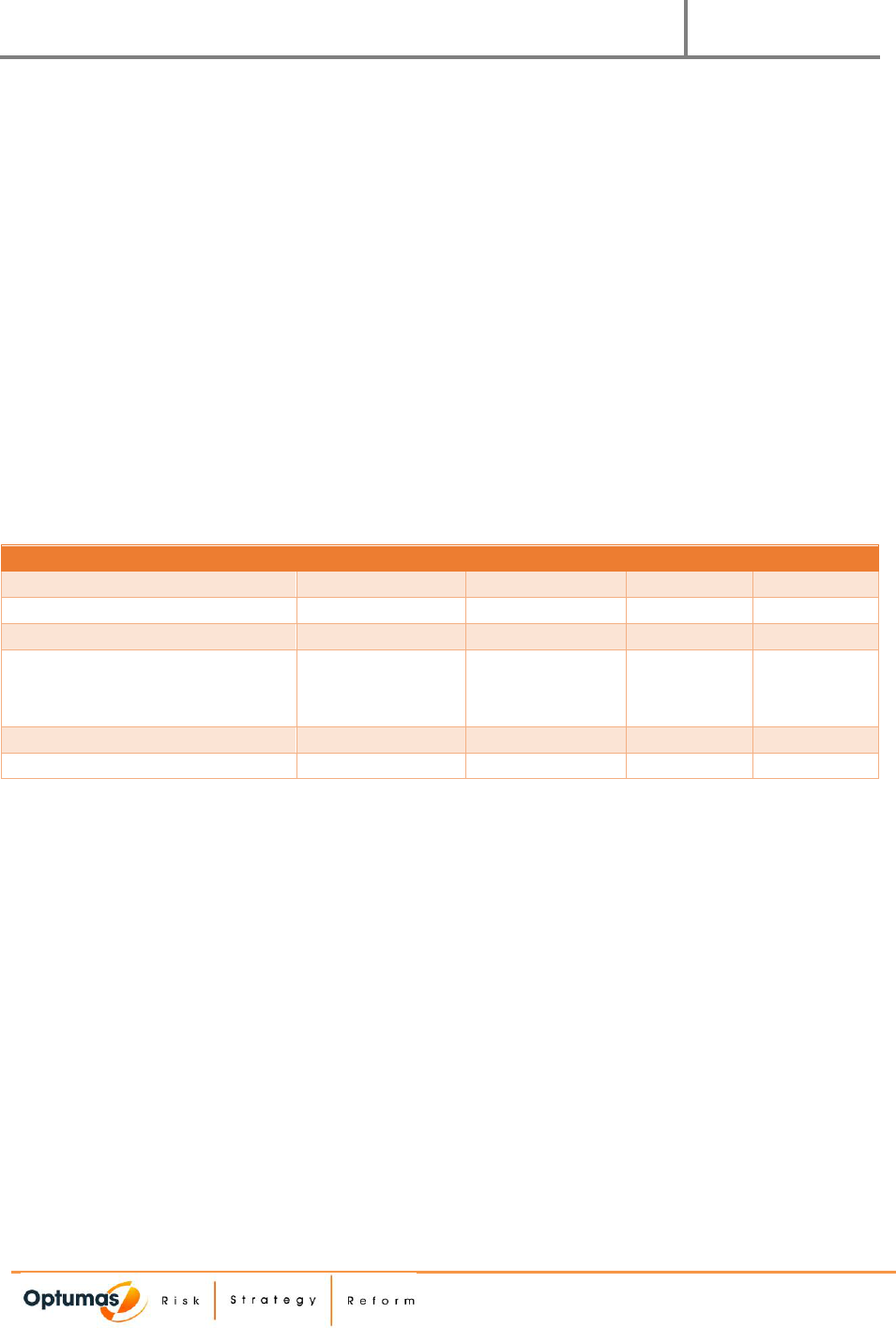
Data
Optumas
14 | P a g e
Data Provided by IME
IME and the health plans provided all of the information requested by Optumas, as noted above.
Data Not Provided
All data requested for this rate setting was provided.
ii. Rate Development Data
Data Description
The base data used for this rate setting is the SFY17 encounter data from the IA Health Link program.
Additional data from the IA Health Link program outside SFY17, as well as FFS claims data, MCO financial
summaries, and MCO-submitted detailed enrollment data was used to inform assumptions or
adjustments to the base data. The data used to inform adjustments to the base data is described for
each adjustment in this document. Below is a summary of the data used:
Data Type
Data Source
Level of Detail
Start Date
End Date
Encounters
IME MMIS
Detailed
04/01/2016
12/31/2017
FFS Claims
IME
Detailed
01/01/2015
12/31/2017
Enrollment
IME
Detailed
01/01/2015
12/31/2017
Financial Template (Encounters,
other medical-related costs,
admin, and enrollment)
All MCOs
Summarized
04/01/2016
12/31/2017
Enrollment
All MCOs
Detailed
04/01/2016
12/31/2017
Pharmacy Claims
One MCO
Detailed
04/01/2016
12/31/2017
In addition to encounter data for non-subcapitated arrangements, Optumas added the sub capitated
costs reported in the MCO financials, by cohort, to the base data to ensure that all medical-related costs
were considered in the development of the base data. The impact of this adjustment was 0.5% and is
shown in detail in Appendix I.B.
Data Availability and Quality
Optumas validated the detailed encounter data through control total, financial template, and monthly
volume comparisons. Optumas identified a significant discrepancy in Amerigroup’s detailed pharmacy
data focused in the fourth quarter of CY16 and some surrounding months. IME identified that this was
due to an issue with the processing of Amerigroup’s pharmacy claims and replacements through Point of
Sale and the MMIS systems. Therefore, Optumas requested detailed pharmacy data from Amerigroup to
use in lieu of the MMIS data. The replacement data matched closely to Amerigroup’s financial template
and was incorporated into the base data.
Optumas summarized the updated detailed data and compared it to the financial data shared by the
MCOs. A reporting adjustment was applied, by cohort, to the base data to reconcile these data sources

Data
Optumas
15 | P a g e
and account for encounters not yet properly flowing through the MMIS system. The impact of this
adjustment was -1.4% and is shown in detail in Appendix I.B.
Additionally, other payment systems not present in the encounter data are detailed in the MCO financial
templates and validated against the MCO financials. Optumas worked with the MCOs and IME to
interpret these payments and ensure they are reflected appropriately, by service and population, in the
base data. Adjustments for provider incentives and other miscellaneous payments by the MCOs resulted
in a 0.1% increase to the base data. These adjustments are shown in greater detail in Appendix I.B. After
applying these adjustment, Optumas believes the data sources consistently, accurately, and completely
reflect the experience for the IA Health Link program in SFY17.
Appropriate Data
Optumas chose to limit the base data to SFY17 completed encounter data. Less than two years of
encounter data existed at the beginning of this rate setting process, and the selection of SFY17 as the
base allows for sufficient run-out, limiting the impact of Incurred-But-Not-Reported (IBNR) adjustments.
This period represents the most recent complete fiscal year of data available for the IA Health Link
program.
The IA Health Link program operated with three MCOs during the SFY17 base data period, but one MCO
left the program between SFY17 and the SFY19 contract period. The remaining MCOs and IME expressed
concerns that contracting and other inefficiencies that may have existed for the plan that departed
should not influence plan relativities and expected reimbursement. Effective December 2017, the vast
majority of the members previously enrolled with AmeriHealth transitioned to enrollment with United.
Optumas compared average unit costs by procedure code and modifier, plan, and rate cell. Optumas
found that many reimbursement rates for a given code tended to be similar between the two remaining
plans but inflated for the departing plan. Optumas applied an adjustment factor to the total service
costs for each rate cell and relevant service category for AmeriHealth enrollees to match the expected
reimbursement from their new plan, United. These factors resulted in a $1.1 million reduction to
professional costs and $20.3 million reduction to waiver costs in the base data.
Reliance on a Databook
Optumas did not rely on the use of a databook in developing the SFY19 IA Health Link capitation rates.
Data sources used in rate development are described in the preceding sections.
iii. Adjustments
Data Credibility
Optumas worked with IME and the MCOs to ensure the detailed encounter data and MCO financial
templates were interpreted consistently. As a result of these discussions, Optumas replaced Amerigroup
pharmacy MMIS detailed data with MCO-submitted detailed data and applied a -1.4% reporting
adjustment to incorporate non-encounterable expenditures, as discussed in Section I.2.B.II, to enhance
the credibility of the base data.
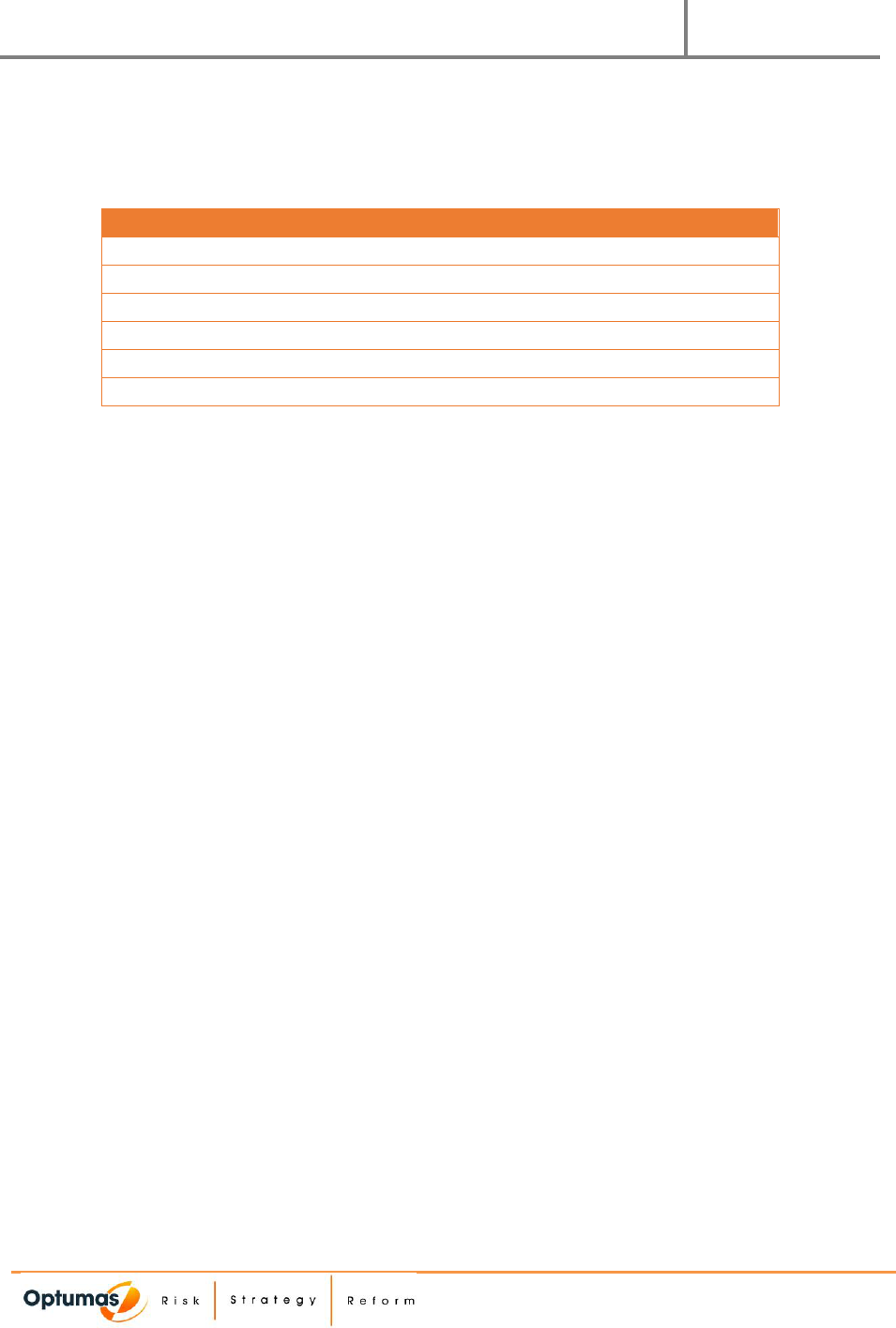
Data
Optumas
16 | P a g e
For rate development purposes, the CHIP rate cell populations were deemed by Optumas to have
insufficient enrollment volume to develop stand-alone rates. As a result, all non-hawk-I CHIP enrollment,
costs, and utilization were included with the more substantial corresponding children rate cells as shown
below, to enhance credibility:
Original Rate Cell
Combined Rate Cell
CHIP - Children 0-59 days M&F
Children 0-59 days M&F
CHIP - Children 60-364 days M&F
Children 60-364 days M&F
CHIP - Children 1-4 M&F
Children 1-4 M&F
CHIP - Children 5-14 M&F
Children 5-14 M&F
CHIP - Children 15-20 F
Children 15-20 F
CHIP - Children 15-20 M
Children 15-20 M
Completion Factors
Optumas developed completion factors by comparing month of incurral and month of payment of
encounters for each COS and MCO. Optumas compared these factors to those submitted by the MCOs
for reasonableness. The overall impact of the Incurred-But-Not-Reported (IBNR) analysis resulted in a
0.991 completion factor.
Errors in Data
Optumas identified a discrepancy between the detailed data and financials for Amerigroup’s pharmacy
claims and replaced it with detailed data from Amerigroup, as discussed above in Section I.2.B.II.
Program Changes
Anesthesia CF
The anesthesia conversion factor was changed from $1.76 to $1.40 per minute, effective 7/1/2017.
Claims with the anesthesia conversion factor were repriced in the base data to reflect this update, with
a net impact resulting in a $3.7 million reduction to the base.
FQHC, RHC, and IHS Repricing
New FQHC and RHC PPS rates, as well as IHS encounter rates went into effect 1/1/2018. Encounters
were repriced to reflect the new payment schedule for FQHCs, RHCs, and IHS facilities. These
adjustments resulted in a $3.3 million increase to the base.
HH LUPA Rates
Home Health Low Utilization Payment Adjustment (LUPA) rates were updated effective 7/1/2017. HH
LUPA claims were repriced in the base data to reflect this update, with a net impact resulting in a $0.2
million increase to the base.
ICF-ID Repricing
Rates for ICF-IDs are periodically updated. The most recent changes to the rate schedule at the time of
rate development, include rates that became effective 10/1/2017. ICF-ID claims were repriced in the

Data
Optumas
17 | P a g e
base data to reflect the most recent rates available, with a net impact resulting in an $8.9 million
increase to the base.
SRC Repricing
Rates for SRCs are periodically updated. The most recent changes to the rate schedule at the time of
rate development, include rates that became effective 10/1/2017. SRC claims were repriced in the base
data to reflect the most recent rates available, with a net impact resulting in a $7.8 million increase to
the base.
CAH Repricing
New CAH rates went into effect 7/1/2015. Encounters were repriced to reflect the new payment
schedule, which resulted in a $3.1 million reduction to the base.
NF Repricing
Rates for NFs are periodically updated, and adjustments are made based on the acuity of the members
present. The most recent changes to the rate schedule became effective 4/1/2018. NF claims were
repriced in the base data to reflect the most recent rates available, with a net impact resulting in a $6.4
million increase to the base.
Outpatient APC Rates
Outpatient APC rates were updated effective 1/1/2018. Outpatient claims were repriced in the base
data to reflect this update, with a net impact resulting in a $7.5 million reduction to the base.
Crossover Coordination of Benefits
Effective 7/1/2017, Medicaid reimbursement on Medicare Part A and Part B was limited to the lesser of
the Medicare cost sharing amount, and the difference between the Medicaid fee schedule and the sum
of payment from Medicare and all other third parties. Previously, Medicaid had paid the full Medicare
cost sharing amount. Crossover claims were repriced to reflect this logic change, resulting in a $21.6
million reduction to the base.
DRG Outliers
Effective 7/1/2017, the cost outlier threshold for DRG payments was increased. The new threshold is the
greater of two times the statewide average DRG payment for the claim- and hospital-specific DRG
payment, plus $75,000. Inpatient claims were repriced in the base data to reflect this update, with a net
impact resulting in a $27.7 million reduction to the base.
Consultation Codes
Effective 7/1/2017, consultation procedure codes are no longer payable through Medicaid. Services
previously billed through consultation codes may be billed through a different visit code, which may
have a different reimbursement. Consultation codes in the base data were modified to reflect this
update, with a net impact resulting in a $5.4 million reduction to the base.
Site-of-Service Differential
Effective 7/1/2017, Medicaid reimbursement rates apply a differential to reflect the difference between
the cost of services when provided in a health care facility setting and the cost of services when
provided in an office setting. Professional claims were repriced in the base data to reflect this update,
with a net impact resulting in a $10.2 million reduction to the base.

Data
Optumas
18 | P a g e
ACA Enhanced PCP
Enhanced payments to qualifying PCPs for certain services ended 06/30/2017. PCP claims were repriced
in the base data to reflect this update, with a net impact resulting in a $20.6 million reduction to the
base.
Fluoride Service
Effective 7/1/2017, topical fluoride varnish is required to be covered during well child visits. Additional
costs were added to the Child 1-4 rate cell for Professional Office visits representing an expected $0.6
million increase.
Pharmacy Rebates for hawk-i
Effective 7/1/2017, MCOs are permitted to pursue supplemental drug rebates for the hawk-i population.
Using MCO annualized estimates based on experience since the change went into effect, Pharmacy
claims for the hawk-i population have been reduced by $1.1 million.
Medicare Part B/Part D Duals
Effective 1/1/2018, a logic enhancement for Amerigroup prevents pharmacies from billing dual
members with primary coverage the whole amount of the claim, for Part B and Part D claims. Using
MCO annualized estimates based on experience since the change, Pharmacy claims for the dual
population have been reduced by $0.9 million.
Habilitation Criteria
Effective 7/1/2017, an update to the Iowa Medicaid Habilitation Guideline revised criteria to better
identify the appropriate level of care for members using home-based habilitation services. Using MCO
annualized estimates based on experience since the change, Waiver services for Waiver populations
have been reduced by $2.7 million.
Out of Network
Effective 7/1/2017, rates for out-of-network providers have been reduced to 80% of the Medicaid
Allowed amount. Using MCO annualized estimates based on experience since the change, claims have
been reduced by $1.1 million.
Re-contracting
Contracts with some hospitals have come up for renewal, allowing MCOs to negotiate better terms.
Using MCO annualized estimates based on experience since the change, hospital claims have been
reduced by $4.2 million.
ASC Misuse
Physicians choosing to perform certain services, such as dermatological biopsies, gynecological biopsies,
and orthopedic joint aspirations at an Ambulatory Surgical Center (ASC), rather than a more appropriate
office setting, have billed claims for professional and facility fees. A policy change effective 4/1/18
reimburses these claims for the professional component only. Using MCO annualized estimates based
on experience since the change, Outpatient claims have been reduced by $0.1 million.
NOC Overlap
A review of incorrect coding regarding Not Otherwise Classified (NOC) codes used for drugs, beginning
9/1/2017, has allowed an MCO to identify savings in the IA Health Link program. This intervention was

Data
Optumas
19 | P a g e
shared with all plans in the program and the MCO annualized estimate based on experience since this
change, as a percentage of plan costs, was used to develop a reduction of $0.4 million to Pharmacy costs
to the total program.
Sick Baby DRG
Newborns with minor conditions, typically seen during the newborn period of an inpatient observation
stay, are being billed with diagnosis codes that are driving payments up to a “sick baby DRG”. When
newborn claims are submitted with only newborn revenue codes (170 and 171), and there is no
authorization for a sick baby stay, the claims will be paid down to the normal newborn rate, effective
4/1/2018. Using MCO annualized estimates based on experience since the change, Inpatient claims for
Children age 0-59 days have been reduced by $0.1 million.
Modifier Audit
The Office of the Inspector General (OIG) released a report titled “Use of Modifier 59 to Bypass
Medicare’s National Correct Coding Initiative Edits”. The OIG found 40% of code pairs billed with
modifier ‘59’ and recommended that carriers perform pre- and post-payment review of modifier ‘59’.
This intervention was shared with all plans in the program and the MCO annualized estimate based on
experience since this change, as a percentage of plan costs, was used to develop a reduction of $0.5
million to costs to the Dual populations in the total program.
Sleep DME
One MCO identified an intervention to allow for pre-service management of sleep Durable Medical
Equipment (DME), including CPAP, APAP, and related supplies, effective for 2018. Using MCO annualized
estimates based on experience since the change, Inpatient claims for Children age 0-59 days have been
reduced by $0.2 million.
Late Notification
The Iowa Medicaid provider manual instructions require that all hospitals notify the plan when a patient
is admitted for an IP stay, so the plan can accurately monitor the case, and assume case management
for the ongoing case and potential discharge. This intervention was shared with all plans in the program
and the MCO annualized estimate based on experience since this change, as a percentage of plan costs,
was used to develop a reduction of $0.7 million to costs to IP services across the total program.
Short Stay Management
An MCO initiative beginning 7/1/2017 focuses on reviewing short stays and recommending observations
instead, with some initial claims for admission being denied. This intervention was shared with all plans
in the program and the MCO annualized estimate based on experience since this change, as a
percentage of plan costs, was used to develop a reduction of $1.0 million to costs to Nursing Home
services across the total program.
PCP Assignment Optimization
An MCO initiative for 2018 expands a PCP assignment program incorporating provider cost, quality, and
performance metrics. Using MCO annualized estimates based on experience since the change,
Professional Office claims have been reduced by $0.2 million.

Data
Optumas
20 | P a g e
Program Integrity
IME has reported identifying approximately $12 million annually in fraud, waste, and abuse through the
FFS program. As the IA Health Link program accounts for the vast majority of medical claim costs in
Iowa’s Medicaid program, and these erroneous costs are typically generated through providers or
members, Optumas reduced estimated costs to reflect denials and recoupments related to program
integrity. After discussions with IME and the MCOs, plan systems and efforts may already be reducing
some of this waste. Using a conservative estimate with guidance from IME, claim costs have been
reduced by 0.2%, or $8.2 million, to reflect expected program integrity savings.
Exception Reduction
Within the IA Health Link program, Amerigroup identified Single Case Agreements within the first year of
experience which required an Exception to Policy (ETP), the IME method of choice in addressing
complex cases. Most of these ETPs relate to LTSS or Behavioral Health related services and it is expected
that number of ETPs will significantly be reduced in the SFY19 contract period. In working with
Amerigroup to identify an estimated impact of ETP reductions, an overall reduction of $0.7 million has
been made to the base data for this item.
PMIC LOS
Pediatric Medical Institutions for Children (PMIC) stays have historically been higher in Iowa than
national norms for other Medicaid plans. The Iowa plan is working to reverse this trend and shorten the
average Length of Stay (LOS) for these children by implementing new medical management processes,
effective 7/1/2017. Using MCO annualized estimates based on experience since the change Behavioral
Health – Inpatient costs for the PMIC population have been reduced $1.1 million.
The impact of each of these program changes on each rate cell is shown in Appendix I.B. A table showing
which program changes are applicable in each rate period is shown in Appendix II.B.
Service and Payment Exclusions
Certain high-cost pharmacy drugs are excluded from the managed care capitation rates; IME reimburses
the MCOs directly for the costs of these prescriptions rather than being included in the monthly
capitation rate. Optumas identified NDCs that meet the criteria for being carved out of the capitation
rates and removed them from the base data, resulting in a -0.4% adjustment. This adjustment is shown
in detail in Appendix I.B. A list of the drugs that meet this criteria is included in Appendix II.C.

Projected Benefit Costs and Trends
Optumas
21 | P a g e
3. Projected Benefit Costs and Trends
A. Rate Development Standards
i. Services Allowed
Final capitation rates are based only upon the services allowed in 42 CFR §438.3(c)(1)(ii) and 438.3(e).
ii. Variation of Assumptions
Variations in the assumptions used to develop the projected benefit costs for covered populations are
based on valid rate development standards, not the rate of federal financial participation associated
with the covered populations.
iii. Trend Assumptions
In accordance with 42 CFR §438.5(d), each projected benefit cost trend assumption is reasonable and
developed in accordance with generally accepted actuarial principles and practices. Trend assumptions
are developed primarily from actual experience of the Medicaid population and include consideration of
other factors that may affect projected benefit cost trends through the rating period.
iv. In-lieu-of Services
IME policy has historically allowed for in-lieu-of services associated with beneficiaries residing in an IMD
up to fifteen days during a given month.
v. IMD Benefits
IME policy has historically allowed for experience specific to beneficiaries age 21 to 64 residing in an
IMD for less than fifteen days to be included within the IA Health Link capitation rates. Upon reviewing
the historical experience for IMD utilization within Iowa’s Medicaid program, Optumas determined that
this volume was immaterial to the overall experience within IA Health Link, and therefore no explicit
adjustment has been made to reflect additional IMD utilization.
vi. IMD as In-lieu-of Service
Please see subsections iv. and v. above.
B. Appropriate Documentation
i. Final Projected Benefit Costs
The rate certification clearly documents the final projected benefit costs by rate cell in Appendix I.B.

Projected Benefit Costs and Trends
Optumas
22 | P a g e
ii. Development of Projected Costs
Description
Complex Needs
Iowa has 14 Mental Health and Disability Service Regions that have been required, by the legislature, to
make certain services available for Iowans in a consistent matter across the state. To meet the
requirements, regions are developing Access Centers and Asserted Community Treatment Teams to
provide additional access and expanding the network for Subacute and Intensive Residential Home
Services. The expansion of these services is expected to mature over the next few years and the Access
Centers are not limited to the Medicaid population. IME provided a Fiscal Impact Summary, using the
most up-to-date information about the development of these Centers and expansion of services, to
project cost estimates by Fiscal Year. Using these cost estimates, Behavioral Health services have been
increased by $2.1 million in SFY19 to account for increased utilization.
APC
IME periodically rebases Ambulatory Payment Classifications (APCs) using emerging data. The current
APC structure was created prior to data for the Wellness Plan (WP) having coverage. IME is expected to
rebase the APC structure in July 2018, which will be retroactively effective beginning 1/1/2018. Using
estimates from the MCOs and IME, Outpatient – Emergency Room and Outpatient – Non-Emergency
Room services have been reduced by $3.1 million in SFY19 to account for the estimated change in costs
resulting from this rebase.
CC and IHH Adjustment
Iowa had established a program of Chronic Condition and Integrated Health Homes prior to the IA
Health Link program and overlapping case management may now be occurring. IME plans to review IHH
performance and eliminate Health Homes that are underperforming, effective January 1, 2019. Case
management procedure codes 99490 and S0280 account for $37.0 million paid to IHHs in SFY17. Using
estimates from IME, costs have been reduced by $2.3 million in SFY19, by COA and COS relative to their
share of these costs, to account for the change in case management payments.
DRG Rebase
IME periodically rebases Diagnosis Related Groups (DRGs) using emerging data. The current DRG
structure was created prior to data for the Wellness Plan (WP) having coverage. IME is expected to
rebase the DRG structure effective October 1, 2018. Using estimates from the MCOs and IME, Inpatient
services have been reduced by $23.1 million in SFY19 to account for the change in costs.
Exclusive DME Provider
IME has instructed the MCOs to develop DME contracts with a national provider to leverage national
pricing and reduce DME costs through a preferred vendor. This change in contracting is expected to go
into effect no later than January 1, 2019. Using estimates from the MCOs and IME, DME/Prosthetics
services have been reduced by $1.5 million in SFY19 to account for the change in costs.
Non-Emergent ED
IME will require an emergent diagnosis code in the primary diagnosis code position and update the list
of allowable emergent diagnosis codes for Emergency Room utilization. The list update is effective

Projected Benefit Costs and Trends
Optumas
23 | P a g e
7/1/2018 and the requirement for an emergent code in the primary position is expected to be
implemented 8/1/2018. Using estimates from the MCOs and IME, Outpatient – Emergency Room
services have been reduced by $8.5 million in SFY19 to account for the change in costs.
Oxygen Adjustment
Providers see discounts when buying in bulk for oxygen services. Optumas reviewed billing patterns for
procedure codes of oxygen services and identified instances of oxygen billed at daily rates, consecutively
for 30 or more days, when it should have been billed at discounted monthly rates. MCOs are expected
to require monthly billing when oxygen is used consistently for a month, rather than daily billing. Based
on this analysis, oxygen services have been reduced by $0.8 million in SFY19 by COA and COS relative to
their share of these costs, to account for this change.
Swing Bed Payments
Swing bed reimbursement in Critical Access Hospitals (CAH) is significantly higher than reimbursement
for similar services available at Nursing Facilities (NF). Members are required to use a NF bed rather than
a CAH swing bed if one is available within 30 miles. IME plans to change this policy immediately to
require NF priority if a bed is available within 50 miles instead. Using estimates from the MCOs and IME,
Inpatient services have been reduced by $1.0 million in SFY19 to account for the change in costs.
ID Waiver Addition
IME is committed to providing better care for the Intellectually Disabled population and has worked
with the State to identify an additional $7.5 million in funding streams to be allocated to enhancement
of the ID tiered service rates. In addition, $1.8 million dollars has been set aside for funding for
individuals with complex needs. These dollars have been added to the capitation rates based on
distribution of costs within each service category and MCO.
The impact of each of these program changes on each rate cell is shown in Appendix I.B. A table showing
which program changes are applicable in each rate period is shown in Appendix II.B.
Changes to Data, Assumptions, and Methodology
Projected costs were developed consistent with generally accepted actuarial principles and practices.
The last rate certification was developed by a previous vendor, and some differences in assumptions and
methodology for the development of projected costs are likely but cannot be explicitly described.
iii. Projected Benefit Cost Trends
Data and Assumptions
Optumas used detailed IA Health Link encounter data, by COA and COS, to develop projected benefit
cost trends. The encounter data available spanned from April 2016 through December 2017, which
incorporates the entirety of the SFY17 base data. The use of this data allowed Optumas to use Managed
Care data for trends while circumventing potential skewed trends from including FFS data, which is
assumed to have potentially different trends. These trends were developed primarily using actual
experience from the Medicaid population, and were informed using MCO financial data and experience
with similar Medicaid programs in other states.

Projected Benefit Costs and Trends
Optumas
24 | P a g e
Methodology
Trend factors were applied to estimate the change in utilization rate (frequency of services) and unit
cost (pure price change, technology, acuity/intensity, and mix of services) of services over time. These
trend factors were used to project the costs from the base period to the future contract period. Trends
were developed on an annualized basis and applied by major service category from the midpoint of the
base period to the midpoint of the contract period.
Trend factors were developed for both utilization and unit cost using historical encounter data, MCO
financial data, and experience with similar Medicaid programs in other states. The historical encounter
data was analyzed by population and COS. The data was arrayed such that 3 month moving averages
(MMA), 6 MMA, and 12 MMA could be calculated. These resulting averages were evaluated and
weighted to best reflect the expected prospective annual trend. There was not a pre-determined
algorithm related to the weighting; it was based on each data extracts’ results and varied depending on
particular nuances within each COS or population.
Trend was applied from the midpoint of the base data (1/1/2017) to the midpoint of each of the
respective three rate ‘tiers’ described earlier in this document:
• Tier 1 (7/1/2018 – 9/30/2018) – Midpoint of 8/15/2018, trended 19.5 months
• Tier 2 (10/1/2018 – 12/31/2018) – Midpoint of 11/15/2018, trended 22.5 months
• Tier 3 (1/1/2019 – 6/30/2019) – Midpoint of 4/1/2018, trended 27 months
Trend factors were developed consistent with generally accepted actuarial principles and practices. The
last rate certification was developed by a previous vendor, and some differences in assumptions and
methodology for the development of trends are likely but cannot be explicitly described.
Components
The annualized prospective utilization and unit cost trend assumptions by cohort and category of service
are included within Appendix II.D.
Variations
Projected benefit cost trends were developed at the service category level by cohort for each MCO.
Similar rate cells were combined for trend development in order to increase credibility. Trends were
combined based on the distribution of enrollment and costs between the MCOs to achieve statewide
trends. Because United now covers members previously enrolled with AmeriHealth, figures for
AmeriHealth were trended using the United trends. The following table describes the rate cells
incorporated into trend cohorts.
Trend Cohort
Rate Cells Incorporated
Children
Children 0-59 Days M&F, Children 60-364 days M&F, Children 1-4
M&F, Children 5-14 M&F, Children 15-20F, Children 15-20M, CHIP -
Children 0-59 Days M&F, CHIP - Children 60-364 days M&F, CHIP -
Children 1-4 M&F, CHIP - Children 5-14 M&F, CHIP - Children 15-20F,
CHIP - Children 15-20M, CHIP – Hawk-i

Projected Benefit Costs and Trends
Optumas
25 | P a g e
Trend Cohort
Rate Cells Incorporated
Disabled
ABD Non-Dual <21 M&F, ABD Non-Dual 21+ M&F, Residential Care
Facility, Breast and Cervical Cancer
Dual
Dual Eligible 0-64 M&F, Dual Eligible 65+ M&F
Institutional
Custodial Care Nursing Facility <65, Custodial Care Nursing Facility 65+,
Non-Dual Skilled Nursing Facility, ICF/ID, State Resource Center, PMIC
Maternity Case Rate
TANF Maternity Case Rate, Pregnant Women Maternity Case Rate
Pregnant Women
Pregnant Women
TANF Adult
Non-Expansion Adults 21-34 F, Non-Expansion Adults 21-34 M, Non-
Expansion Adults 35-49 F, Non-Expansion Adults 35-49 M, Non-
Expansion Adults 50+ M&F
Waiver
Elderly HCBS Waiver, Dual HCBS Waivers: PD; H&D, Non-Dual HCBS
Waivers: PD; H&D; AIDS, Brain Injury HCBS Waiver; Intellectual
Disability HCBS Waiver; Children’s Mental Health HCBS Waiver
Wellness Plan
WP 19-24 F (Medically Exempt), WP 19-24 M (Medically Exempt), WP
25-34 F (Medically Exempt), WP 25-34 M (Medically Exempt), WP 35-
49 F (Medically Exempt), WP 35-49 M (Medically Exempt), WP 50+
M&F (Medically Exempt), WP 19-24 F (Non-Medically Exempt), WP 19-
24 M (Non-Medically Exempt), WP 25-34 F (Non-Medically Exempt),
WP 25-34 M (Non-Medically Exempt), WP 35-49 F (Non-Medically
Exempt), WP 35-49 M (Non-Medically Exempt), WP 50+ M&F (Non-
Medically Exempt)
Other Material Adjustments
No other adjustments to projected benefit cost trends were made.
iv. Mental Health Parity and Addiction Equity Act
We are unaware of any material program changes at this time, that would require an adjustment for
compliance with the Mental Health Parity and Addiction Equity Act as required by 42 CFR
§438.3(c)(1)(ii).
v. In-lieu-of Services
Please see Section I.3.A.iv and I.3.A.v for information surrounding IMD services.
vi. Retrospective Eligibility
Optumas has relied on IA Health Link experience for SFY17 as the base data used to develop the SFY19
capitation rates. Retroactive eligibility periods have historically been excluded from the IA Health Link
program. Therefore, no explicit adjustment has been made for this in the development of the SFY19 IA
Health Link capitation rates.

Projected Benefit Costs and Trends
Optumas
26 | P a g e
vii. Changes in Covered Benefits
Any changes to covered benefits in the IA Health Link program in SFY19 have been accounted for within
the rate development and are described in detail above in Section I, Subsection 2.B.iii.
viii. Impact of Changes
The impact of changes to covered benefits in the IA Health Link program in SFY19 are shown in Appendix
I.B. Each change to covered benefits includes an estimated impact of the change on the amount of
projected benefit costs and a description of the data, assumptions, and methodologies used to develop
the adjustment in Section I, Subsection 2.B.iii. above.

Special Contract Provisions Related to Payment
Optumas
27 | P a g e
4. Special Contract Provisions Related to Payment
A. Incentive Arrangements
There are no incentives included in the contract between the State and the MCOs in the IA Health Link
program.
B. Withhold Arrangements
i. Rate Development Standards
This section provides supporting documentation and describes the withhold arrangement in the
contract between the State and the IA Health Link MCOs.
ii. Appropriate Documentation
Time Period and Purpose
The time period of the withhold arrangement is consistent with the SFY19 rating period. The purpose of
the arrangement primarily relates to value-based purchasing, access to care, network distance
standards, and the appeal process.
Description of the Total Percentage Withheld
In SFY19, there is a withhold in place of 2% of the total capitation rate revenue. Each MCO has the ability
to earn back the withhold to the extent that specific quality and performance measures are met as
stated in the contract. The capitation rates gross and net of the 2% withhold are shown in Appendix I.A.
Estimate of Percentage to be Returned
Based on emerging experience of the IA Health Link MCOs and discussion with IME, we estimate that
the MCOs will earn between 50% to 75% of the 2% withhold.
Reasonableness of Withhold Arrangement
Our review of the total withhold percentage of 2% of capitation revenue is reasonable within the
context of the capitation rate development.
Effect on capitation rate development
The withhold arrangements had no effect on the development of the capitation rates. The capitation
payments minus the portion that is not reasonably achievable are actuarially sound.

Special Contract Provisions Related to Payment
Optumas
28 | P a g e
C. Risk-Sharing Mechanisms
i. Rate Development Standards
This section provides supporting documentation and describes the risk-sharing arrangements between
the State and the health plans.
ii. Appropriate Documentation
Other Risk-Sharing Arrangements
The SFY19 IA Health Link capitation rates have been developed as full risk rates. The State has decided,
as a policy decision, to discontinue the use of the non-waiver habilitation services risk pool. As a result of
the departure of AmeriHealth from the IA Health Link program and the majority of their prior members
enrolling in United, the disparity in service utilization between MCOs is expected to be significantly
reduced.
Medical Loss Ratio Arrangement
The State requires all health plans to maintain a medical loss ratio (MLR) of 88%. If the MLR is less than
88%, the health plans must refund the State the difference.
Reinsurance
The contracts between DHS and the MCOs require that the MCOs shall comply with reinsurance
requirements of 191 Iowa Administrative Code 40.17 and shall file with the Agency all contracts of
reinsurance or a summary of the plan of self-insurance. The contractor shall provide to the Agency the
risk analysis, assumptions, cost estimates, and rationale supporting its proposed reinsurance
arrangement.
D. Delivery System and Provider Payment Initiatives
Not applicable.
E. Pass-Through Payments
i. Rate Development Standards
This section provides supporting documentation and describes all existing pass-through payments
incorporated into the rates for this rating period.

Special Contract Provisions Related to Payment
Optumas
29 | P a g e
ii. Appropriate Documentation
Pass-Through Payments
Graduate Medical Education (GME) and University of Iowa Physician ACR payments are the pass-through
payments incorporated into the rates for this rating period.
The GME payments are made to teaching hospitals for purpose of funding graduate medical education
within the state. These payments are received by teaching hospitals with an accredited medical
education program and are funded with direct State appropriations to the Medicaid agency. These
amounts are paid to the teaching hospitals by the MCOs but are not included in the contracted rates
between the plans and the hospitals. Although we interpret this GME payment to be outside the
standard definition of pass-through payments per 42 CFR 438.6(a), we have included the description and
amount of the GME payment in this section of the certification letter.
The University of Iowa Physician ACR payments are made to qualifying physicians with the University of
Iowa. The additional payments made to the physicians provide support for contracting and maintain
access for Medicaid beneficiaries to the University of Iowa physicians and the MCOs.
Amount
The amount of GME payments included in the SFY19 rates is approximately $22.2 million at an
aggregate PMPM of $3.07. The PMPM amount included for the rate cells that receive this payment
($5.28 PMPM) is consistent with the amount included in the SFY18 rates. The estimated amount for the
University of Iowa ACR payments is approximately $63.7 million at an aggregate PMPM of $8.81. The
total amount for the ACR payments is allocated across the rate cells based on utilization of services by
qualifying physicians and practitioners.
Providers receiving the payment
The providers receiving the GME payments are teaching hospitals. The providers receiving the adjusted
UPL payments are University of Iowa qualifying physicians and practitioners.
Financing mechanism
GME payments are funded with direct State appropriations to the Medicaid agency. The University of
Iowa UPL payments are funded through intergovernmental transfers (IGT).
Pass-through payments in the previous rating period
The GME payment amount in the SFY18 rates was approximately $22.7 million. The university of Iowa
ACR payment amount was estimated to be $49.6 million in the SFY18 rates.

Special Contract Provisions Related to Payment
Optumas
30 | P a g e
Pass-through payments for the rating period in effect on July 5, 2016
The GME payment amount in the rate effective July 5, 2016 (SFY17 rates) was approximately $22.3
million. The University of Iowa ACR payment amount was estimated to be $57.0 million in the SFY17
rates.
Hospital pass-through payments
GME payments are incorporated within the SFY19 capitation rates and reflect payments to hospitals.
However, we interpret the GME payment to be outside the standard definition of pass-through
payments per 42 CFR 438.6(a). Therefore, there are no hospital pass-through payments in the SFY19
rates per the definition of pass-through payments per 42 CFR 438.6(a).

Projected Non-Benefit Costs
Optumas
31 | P a g e
5. Projected Non-Benefit Costs
A. Rate Development Standards
i. Required Components
In accordance with 42 CFR §438.5(e), the development of the non-benefit component of the rate
includes reasonable, appropriate, and attainable expenses related to MCO administration, taxes,
licensing and regulatory fees, contribution to reserves, risk margin, and cost of capital. In addition, the
non-benefit component includes other operational costs associated with the provision of services under
the contract, as required by 42 CFR §438.3(c)(1)(ii).
ii. PMPM and Percentage of Capitation Rates
Non-benefit costs were developed as a percentage of capitation rates.
iii. Variations
Variations in the assumptions used to develop the projected non-benefit costs for covered populations
are based on valid rate development standards. Variations in non-benefit costs exist between rate cells
and between MCOs. Variations are not based on the rate of federal financial participation associated
with the covered populations
iv. Health Insurance Providers Fee
The ACA Health Insurance Providers Fee (HIPF) has a moratorium for the CY19 time period. Since these
capitation rates are for SFY19, they include six months of CY19 and six months of CY18. Optumas will
work with IME to determine the funding mechanism that will make MCOs whole for their CY18 liability.
If IME decides to reimburse the MCOs for the HIPF via capitation rates, Optumas plans to provide an
updated certification with an informed estimate of the HIPF once that information becomes available in
early Fall 2018.
B. Appropriate Documentation
i. Development
Description
Non-benefit costs were developed using data from financial templates completed by each MCO and a
review of non-benefit costs in Medicaid programs from states with similar populations and services.
Although three MCOs completed these templates, AmeriHealth members transferred service to United
in December 2017. In developing non-benefit cost assumptions, consideration was given to economies
of scale resulting in variation between final MCO non-benefit cost projections. The level of non-benefit
costs necessary can vary between population to effectively manage care. Non-benefit costs are shown
by rate cell and MCO in Appendix I.B.

Projected Non-Benefit Costs
Optumas
32 | P a g e
Material Changes
In the development of the non-medical load for the SFY19 capitation rates, Optumas reviewed MCO
financial templates summarizing costs quarterly for CY16 and CY17, which included the SFY17 base data
period as well as more recent data. Assumptions and methodologies may vary between the SFY18
certification and this document but cannot be explicitly described as the SFY19 capitation rates reflect
the first year in which Optumas has developed capitation rates for the IA Health Link program.
ii. Cost Categories
The non-medical cost load includes administrative costs and allocation for profit, risk, and contingency
(P/R/C). Non-medical load, itemizing administrative and P/R/C loads, is shown in Appendix I.B.
iii. Health Insurance Providers Fee
As noted in Section 5.A.iv, no allowance has been made at this time for the HIPF.

Risk Adjustment and Acuity Adjustments
Optumas
33 | P a g e
6. Risk Adjustment and Acuity Adjustments
A. Risk Development Standards
i. Risk Adjustment
Optumas accounted for the relative risk in the health status of enrollees in each MCO through various
methods designed to best match payment to risk for each cohort.
ii. Methodology
Consistent with 42 CFR §438.5(g), for the prospective risk adjustment, Optumas worked with IME to
select a risk adjustment methodology that uses generally accepted models and applied it in a budget
neutral manner, consistent with generally accepted actuarial principles and practices, across all MCOs in
the program to calculate adjustments to the payments as necessary.
iii. Acuity Adjustment
No acuity adjustments have been made in the development of the SFY19 IA Health Link capitation rates.
B. Appropriate Documentation
i. Prospective Risk Adjustment
In accordance with 42 CFR §438.7(b)(5)(i), the rate certification describes all prospective risk adjustment
methodologies below.
Data
Optumas relied on enrollment and encounter data from SFY17 (July 2016 – June 2017) as the experience
period for capturing the relevant diagnosis and pharmacy information for calculating member risk
scores. The transition plan for AmeriHealth’s departure from IA Health Link enrolled the vast majority of
AmeriHealth’s members with United, beginning December 2017. Due to this shift in enrollment,
Optumas relied on a December 2017 snapshot month to assign members and their associated risk
scores, for purposes of prospective application to the SFY19 capitation rates.
Model
Optumas incorporated developed risk scores and relativities to apply to most populations in the IA
Health Link program. For the remaining populations, Optumas made no risk adjustment and defaulted
to the statewide rate.
Optumas applied risk scores to most non-LTSS populations, including Children (over the age of one),
Non-Expansion Adults, Wellness Plan, and ABD Non-Duals. Risk scores were developed using UCSD’s
CDPS+RX V.6.2.2 tool, with national prospective weights and a December 2017 enrollment snapshot.

Risk Adjustment and Acuity Adjustments
Optumas
34 | P a g e
This modeling was developed with a three-month eligibility duration requirement, such that members
had to have at least three months of enrollment within SFY17 to be scored. Members who were
unscored through this process received the MCO-specific average disease weight of scored members for
each COA, along with their specific demographic weight.
For the LTSS populations, Optumas developed relativity factors to be applied instead of risk scores. The
majority of costs for these members is derived from LTSS services which would not be adequately
identified using the CDPS+RX analysis. These factors were developed by comparing the total PMPM of
each rate cell within an MCO to the statewide PMPM for the rate cell in the SFY17 base data period;
experience for the previous AmeriHealth-enrolled population was aggregated with United’s SFY17
experience to ensure the relativities accurately captured the impact of this transition in enrollment.
The remaining populations used a statewide rate. Some of these populations, like BCCP and Non-Dual
Skilled Nursing Facility had populations insufficient for a risk adjustment to be credibly applied. A table
detailing the risk adjustment model used for each rate cell, along with the resulting factors, is shown in
Appendix II.E.
Methodology
The risk adjustment factors were applied in a statewide budget neutral manner for the MCOs. The risk
adjustment methodology uses generally accepted actuarial principles and practices. Appendix II.F
demonstrates the budget neutrality of the risk adjustments made for each rate cell. Consistent with how
rates were developed, same-demographic Children and CHIP rate cells were combined for credibility in
developing risk adjustment factors. This budget neutrality summary is shown using the blend of the
three Tier contract period rates (25% Tier 1, 25% Tier 2, 50% Tier 3).
Magnitude
The magnitude of the adjustment is an increase of 0.02% for UHC and a decrease of 0.04% for AGP. The
impact by rate cell and in total for each MCO is shown in Appendix II.G.
Assessment of Predictive Value
Optumas reviewed the normalized risk scores as developed for the SFY19 IA Health Link rates to the
normalized risk scores used by the previous vendor in the development of the SFY18 rates. In general,
the relative risk scores by COA and MCO showed consistency in direction and magnitude. As more
recent experience becomes available for the IA Health Link program, Optumas will continue to monitor
and review the correlation between prospective risk scores and relative costs by MCO and COA.
Concerns
At this time, Optumas has no concerns with the risk adjustment process.

Risk Adjustment and Acuity Adjustments
Optumas
35 | P a g e
ii. Retrospective Risk Adjustment
No retrospective risk adjustment has been made in the development of the SFY19 rates.
iii. Changes to Risk Adjustment Model and Budget Neutrality
In the SFY19 rates, the LTSS service components, along with the non-LTSS service component of the
capitation rates for the LTSS populations, were risk adjusted using relativity factors by plan compared to
statewide PMPMs. Additionally, certain populations (notably dual eligible populations) that had been
risk adjusted using CDPS+Rx in SFY18 now rely on a cost-based relativity factor. All other components of
the risk adjusted model are consistent with the SFY18 rates and all risk adjustment are applied in a
budget neutral fashion.
iv. Acuity Adjustment
No acuity adjustments were made for the SFY19 rates.

Section II
Optumas
36 | P a g e
Section II. Medicaid Managed Care Rates with Long-Term
Services and Supports

Managed Long-Term Services and Supports
Optumas
37 | P a g e
1. Managed Long-Term Services and Supports
A. Required Content
The development of the SFY19 rates for the LTSS populations is consistent with the guidance above in
Section I of the required standards for rate development and CMS’ expectations for appropriate
documentation.
The IA Health Link program covers individuals receiving LTSS services across several rating cells.
Beneficiaries in these rate cells include elderly and disabled individuals age 19 and older who do not
qualify for Medicare coverage and are receiving Medicaid assistance, including all home and community-
based waiver enrollees. A significant portion of services provided to these members are LTSS benefits
including nursing facility, home care, and home and community based (HCBS) waiver services. The IA
Health Link includes individuals receiving the following services:
• Intermediate care facility or nursing home care
• ICF/ID facilities
• State resource centers
• Hospice
• Psychiatric mental institutions for children
• Home and Community Based Waiver Services, including:
o Physical Disability Waiver
o Health and Disability Waiver
o AIDS Waiver
o Brain Injury Waiver
o Elderly Waiver
o Children’s Mental Health Waiver
o Intellectually Disability Waiver
The SFY19 rates were developed for all services incurred by LTSS members, with the exception of dental
services and certain prescription drugs that are carved out of the capitation rates.
B. Rate Development Standards
i. Rate Blending
Optumas developed the LTSS capitation rates by blending the rates for each LTSS rating group. The
rating groups include: Elderly, Physically Disabled, Intellectually Disabled, and Children’s Mental Health.
C. Appropriate Documentation
i. Payment Structures
Capitation payments for LTSS benefits are paid as a single capitation rate for each LTSS rating group, by
MCO. MCO payments vary based on actual MCO enrollment. Optumas used December 2017 enrollment
as the basis for the LTSS blend. The rate cells are blended using the rating groups mentioned in B. above.

Managed Long-Term Services and Supports
Optumas
38 | P a g e
A summary of the rate blending methodology is shown in Appendix II.H. This summary is shown using
the blend of the three Tier contract period rates (25% Tier 1, 25% Tier 2, 50% Tier 3).
ii. Non-Benefit Costs
Non-medical load for the LTSS population has been developed consistent with the approach for all IA
Health Link populations. This is described further in Section I.5 of this certification letter.
iii. Sources
The LTSS capitation rates were developed using SFY17 encounter data. After accounting for program
change adjustments, trend, applying risk adjustment, and adjusting for non-medical load, the rates were
blended according to broad rating groups. A summary of the rate blending methodology is shown in
Appendix II.H.

Section III
Optumas
39 | P a g e
Section III. New Adult Group Capitation Rates

Data
Optumas
40 | P a g e
1. Data
A. New Adult Group Data
The same data used to set rates for SFY19 for the traditional Medicaid populations was used to develop
rates for the new adult group. IA Health Link encounter data for the Wellness Plan (WP) new adult
group, as described in Section I.2., was used to develop SFY19 rates.
B. Previous Rating Periods
i. New Data
Previous rate setting for the WP population in SFY18 used a combination of FFS and MCO experience to
develop rates. For the SFY19 rate setting, Optumas utilized IA Health Link experience from SFY17, the
most recent complete year of the IA Health Link program, as the base data to develop rates.
ii. Monitor Costs
IME and Optumas will continue to review emerging experience for the WP population, and will consider
the necessity of any adjustments resulting from emerging experience varying materially from cost
projections.
iii. Actual Experience Compared with Expectations
Projected costs fell below emerging experience for each MCO during program year 1 of the IA Health
Link program, SFY17. Optumas believes that the use of SFY17 experience as the base should better align
payment to risk for the SFY19 contract period as compared with the pre-IA Health Link data used in the
development of the SFY18 rates.
iv. Adjustment for Differences
Optumas has used SFY17 encounter data as the base for the SFY19 rates, which incorporates a full year
of WP encounter experience under the IA Health Link program. While there is not an explicit adjustment
calculated based on the relative experience between the SFY17 rates and the SFY17 actual experience,
Optumas believes that the use of SFY17 data takes into account this difference as it reflects actual
experience under the IA Health Link program.

Projected Benefit Costs
Optumas
41 | P a g e
2. Projected Benefit Costs
A. New Adult Group Projection Issues
i. New Adult Groups Covered in Previous Rating Periods
Optumas worked with IME to utilize SFY17 IA Health Link encounter data as the base for the SFY19
capitation rates. This reflects a change in base data as compared with the SFY18 rate development
process, which relied on pre-IA Health Link FFS data for this population.
As a result of using actual experience from the IA Health Link program, no adjustments were made for:
• Acuity adjustments
• Pent-up demand
• Adverse selection
• Demographic changes
• Differences in provider reimbursement rates, as these differences do not exist between the WP
and non-WP populations
B. Key Assumptions
i. Acuity Adjustments
No acuity adjustment was made for the WP population.
ii. Pent-up Demand
The WP population has had several years of experience within the Iowa Medicaid program at the time of
the SFY17 base data period, so no adjustment for pent-up demand was deemed necessary.
iii. Adverse Selection
The WP population has had multiple years of experience with the Iowa Medicaid program, and no
significant changes in the population are expected, so no adjustment for adverse selection was deemed
necessary.
iv. Demographics
The WP population has had multiple years of experience with the Iowa Medicaid program, and no
significant changes in the population are expected, so no adjustment for demographic changes was
deemed necessary.
v. Reimbursement and Networks
Any reimbursement or network adjustments made applied to all populations, and are described in
Section I.

Projected Benefit Costs
Optumas
42 | P a g e
vi. Other Adjustments
No other material adjustments were made to the WP projected benefit costs outside of those described
in Section I.
C. Benefit Plan Changes
All benefit plan changes have been documented in Section I. No additional benefit plan changes specific
to the WP population have been made.
D. Other Material Changes
No other material changes were made to the WP population rate setting.

Projected Non-Benefit Costs
Optumas
43 | P a g e
3. Projected Non-Benefit Costs
A. Required Components
i. Changes in Methodology
Projected non-benefit costs for the WP were developed using the same data, methodology, and
assumptions as the traditional populations, described in Section I.5. Consistent with the description in
Section I.5, methodology may vary between the SFY18 certification and this document but cannot be
explicitly described as SFY19 reflects the first year in which Optumas has developed IA Health Link
capitation rates.
ii. Changes in Assumptions
Projected non-benefit costs for the WP were developed using the same data, methodology, and
assumptions as the traditional populations, described in Section I.5. Consistent with the description in
Section I.5, methodology may vary between the SFY18 certification and this document but cannot be
explicitly described as SFY19 reflects the first year in which Optumas has developed IA Health Link
capitation rates.
B. Key Assumptions
Optumas used the same assumptions in developing non-benefit costs for the WP and other Medicaid
populations. The development of non-benefit costs for all populations is described in Section I. 5. and
non-benefit costs are shown by rate cell and MCO in Appendix I.B.

Final Certified Rates
Optumas
44 | P a g e
4. Final Certified Rates
A. Required Components
i. Comparison to Previous Rates
A comparison to the final certified in the previous rate certification, for the WP population, consistent
with 42 CFR §438.7(d), is shown in Appendix II.A.
ii. Other Material Changes
No other material changes were made to the WP rate development outside of what has been described
in this document.

Risk Mitigation Strategies
Optumas
45 | P a g e
5. Risk Mitigation Strategies
A. Description of Strategy
As discussed in Section I. 4., the SFY19 IA Health Link capitation rates have been developed as full risk
rates. The State has decided, as a policy decision, to discontinue the use of the non-waiver habilitation
services risk pool.
B. Comparison to Previous Period
i. Changes in Strategy
A risk corridor was in place for Amerigroup’s total population for SFY18. No risk corridor is currently in
place for any population in SFY19.
ii. Rationale for Change
There has been no change from the SFY18 rates in use of a risk corridor for the WP population.
iii. Experience and Results
As a result of using SFY17 experience from the IA Health Link program for the WP population, which
reflects experience after multiple years of enrollment for the WP population in Iowa’s Medicaid
program, experience is not anticipated to fluctuate drastically between the base period and the contract
period, with the exception of the impact of program changes already incorporated within the SFY19
capitation rate development. As a result of using the newer base data, no additional risk mitigation
strategy is deemed necessary.

Actuarial Certification Letter
Optumas
46 | P a g e
Actuarial Certification Letter
We, Zach Aters, Senior Actuary at Optumas and Member of the American Academy of Actuaries (MAAA)
and an Associate of the Society of Actuaries (ASA), and Barry Jordan, Consulting Actuary at Optumas and
Member of the American Academy of Actuaries (MAAA) and an Associate of the Society of Actuaries
(ASA), are certifying the calculation of the capitation rates described in this certification letter. Appendix
I contains the Rate Development Summaries and final capitation rates for all cohorts. We meet the
qualification standards established by the American Academy of Actuaries and have followed the
practice standards established from time to time by the Actuarial Standards Board.
The capitation rates provided with this certification are considered actuarially sound for purposes of the
42 CFR 438.4, according to the following criteria:
▪ The capitation rates have been developed in accordance with generally accepted actuarial
principles and practices;
▪ The capitation rates are appropriate for the populations to be covered, and the services to be
furnished under the contract; and
▪ The capitation rates meet the requirements of 42 CFR 438.4.
The actuarially sound rates that are associated with this certification are effective July 1, 2018 through
June 30, 2019 for the IA Health Link Managed Care program, and developed as three separate contract
period tiers:
▪ Tier 1: July 1, 2018 – September 30, 2018
▪ Tier 2: October 1, 2018 – December 31, 2018
▪ Tier 3: January 1, 2019 – June 30, 2019
The actuarially sound capitation rates are based on a projection of future events. Actual experience may
vary from the experience assumed within their rate projection. The capitation rates offered may not be
appropriate for any specific Managed Care Organization (MCO). An individual MCO should review the
rates in relation to the benefits that it is obligated to provide to the covered population and to its
specific business model. The MCO should evaluate the rates in the context of its own experience,
expenses, capital, surplus, and profit requirements prior to agreeing to contract with IME. As a result of
this evaluation, the MCO may require rates above or below the actuarially sound rates associated with
this certification.
Please feel free to contact Zach at 480.588.2495 or Barry at 480.588.2492 for any additional
information.
Sincerely,
Zachary Aters, ASA, MAAA Barry Jordan, ASA, MAAA
Senior Actuary, Optumas Consulting Actuary, Optumas

Appendices
Optumas
47 | P a g e
Appendices
The appendices are contained in the following accompanying Excel workbooks:
IA Health Link SFY19 Rate Certification Appendix I 2018.07.13.xlsx
IA Health Link SFY19 Rate Certification Appendix II 2018.07.13.xlsx
